- Violence or threat of violence every worker could suffer from at their workplaces.
- More than two million of American workers are exposed to the cases of violence.
Nowadays, the case of violence in the workplace is not a new topic for consideration. A number of workers have already agreed with the fact that they were treated violently. The point is that such violence could be of different types including verbal abuse, violence outside the workplace, physical assaults, etc. This topic is also burning because it touches upon such issues as gender roles, racial inequalities, and age differences. It is not enough to know that violence in the workplace occurs. It is important to understand how to protect people and promote safe working conditions. Victims of workplace violence could say a lot, and this presentation is an attempt to underline the importance of the discussions of this topic and providing people with facts, credible information, and suggestions on how to avoid and stay protected in the workplace.
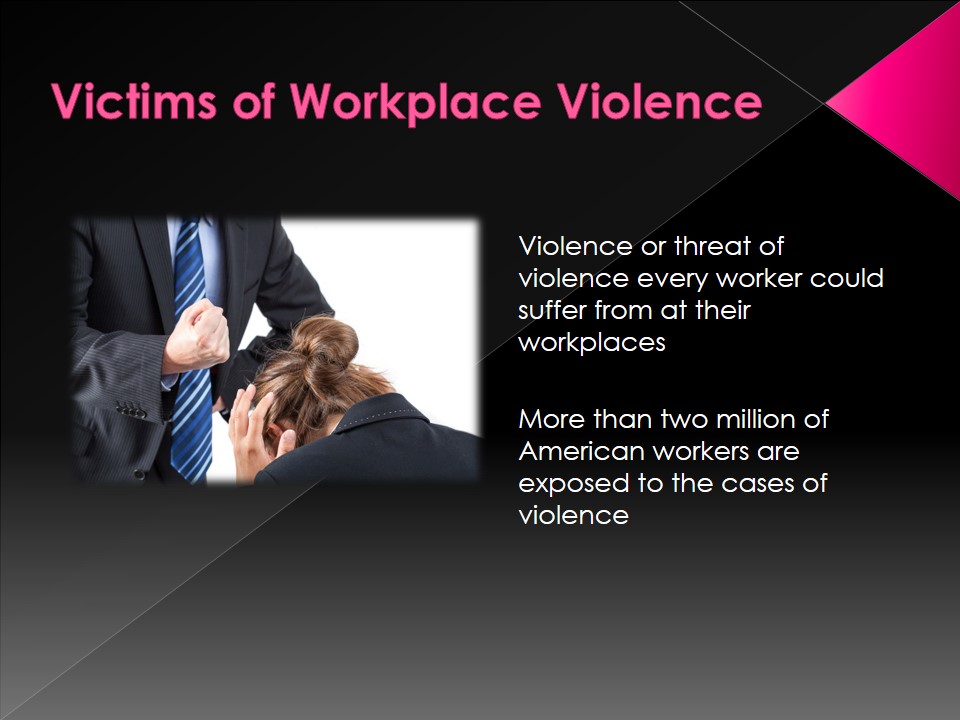
Attention, the Audience!
- Students;
- Parents;
- Workers;
- Leaders;
- Managers;
- Governmental representatives;
- and even the President.
The topic of workplace violence is urgent. It should be discussed at all levels in order to find an appropriate solution.
Students should learn more about workplace violence to take the preventive measures and know how to protect themselves with time or help other people to be protected.
Parents have to understand that their children, who work or even study, are also exposed to workplace violence. They should know their obligations and precautionary steps to be taken.
All workers could find this presentation and discussions important to identify possible threats in their workplaces, protect their friends and fellows, or even share their experience and opinion.
Leaders and managers should understand their roles in the workplace and make sure that violence is not the hot topic for discussions at their organizations.
The President and other governmental representatives could use this project as the reason for why people are bothered by workplace violence, learn more about the cases of violence in the chosen state, and even understand the needs and expectations of ordinary people.

Maryland Facts
- Maryland is also known as Old Line State;
- Its territory is 25,315 km2;
- More than 6,000,000 people Marylanders live there and take into consideration a number of:
- Employment laws;
- The Maryland Declaration of Rights of 1776.
Maryland is one of the 50 states of America. It is not the biggest or smallest one in the USA. It has its culture and traditions. On its territory that is about 25, 315 sq.km, about 6,000,000 people live (Maryland, 2016). There are a number of documents and laws that define the rules and orders the people of Maryland should follow. For example, employment laws identify the conditions under which people should work and consider their opportunities and duties.
The Maryland Declaration of Rights of 1776 aims at protecting the rights of people, who live in Maryland.

Workplace Violence
- Forms:
- Physical violence;
- Harassment;
- Life-threatening behavior;
- Intimidation;
- Verbal assault;
- Homicide.
Regardless the state, workplace violence can gain different forms. People should be aware of these forms to identify them in a short period of time and take the required actions. Physical violence is the use of force in regards to a person that can cause some harm to a body.
Harassment is a kind of aggressive pressure that could be of sexual, verbal, or physical types (Kerr, 2010). Life-threatening behavior could also bother people when they observe that some actions of other people can cause any kind of harm to their physical or even mental conditions. Intimidation is a form of violence that implies verbal threats such as blackmails or bluff. Verbal assault is the use of different words and signs that could make a person take certain actions against their will. Homicide could be accidental or intentional and lead to a number of criminal outcomes that are punished by law.
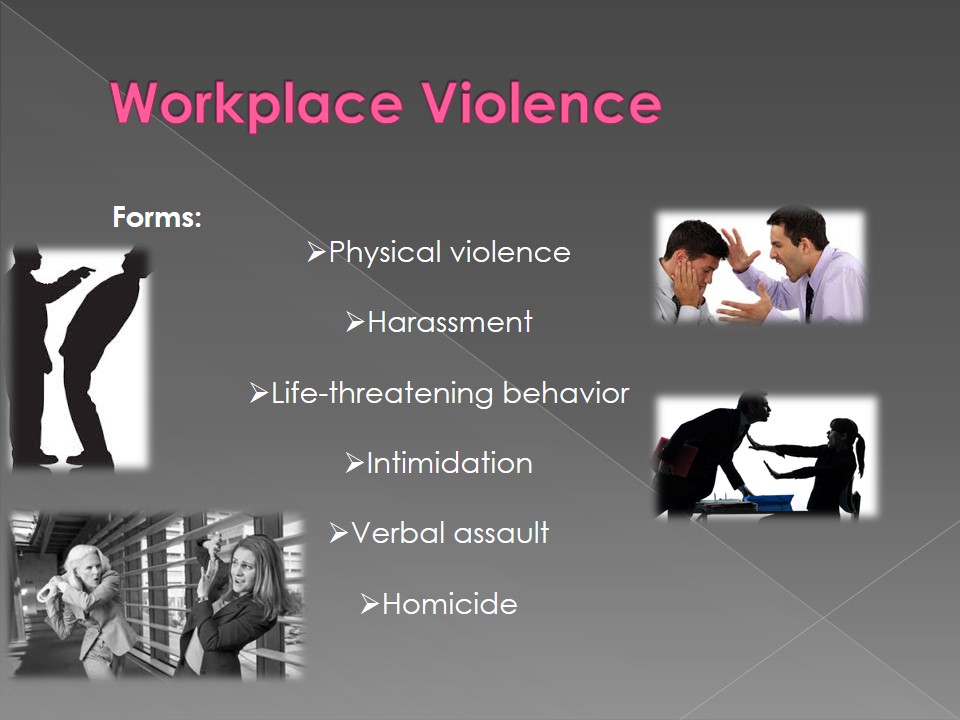
Workplace Violence: Types
- Type 1: robbery or other types of violent behavior demonstrated by criminals, who have no connection to the workplace.
- Type 2: violence is performed by customers or other users of services at employees.
- Type 3: violence is directed at co-workers or supervisors by ordinary employees.
- Type 4: violence committed by an employee in the workplace in regards to a person, who does not belong to that workplace but has some personal relations with an employee.
The specialists have come to the conclusion that workplace violence could be divided into four main types in regards to the conditions under which violence occurs (Rosen & Milam-Perez, 2005).
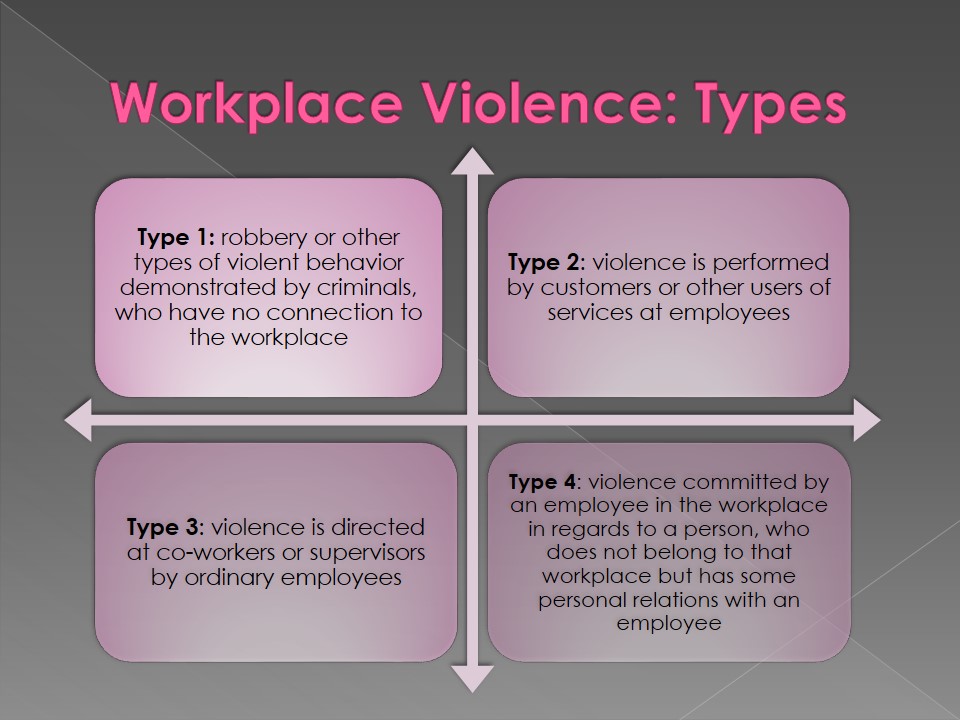
Workplace Violence: Dangers
- Hard to predict.
- Hard to control.
- Hard to understand.
But:
- Possible to prevent and Possible to inform people.
Workplace violence is frequently recognized as a specific category of violent crime that occurs in the workplace and makes people, including employers, the community, and ordinary employees, think about responses and protection (Rugala & Isaacs, n.d.). The peculiar danger of this type of violence is that it cannot be predicted or understood. It cannot be controlled or explained. Still, the good thing that, nowadays, a number of steps are taken in order to prevent it and provide people with enough amounts of information about what workplace violence is, what victims of workplace violence could feel or expect, and how people can protect themselves against negative outcomes of violent and aggressive behavior of other people.

Workplace Violence: Circumstances
- Circumstances of workplace violence may vary and depend on a type of organizations the cases of violence occur:
- Robbery-associated.
- Clients’ discharges.
- Co-workers misunderstandings.
- Domestic violence.
According to the National Institute for Occupational Safety and Health (2014), the circumstances of workplace or occupational violence could vary. For example, the victims of workplace violence could be ordinary workers, who suffer from the discontents introduced by clients or patients because of poorly performed work or even some misunderstandings. Very often, workers suffer from robbery-associated violence. Such cases are hard to predict because they are done by people, who are not involved in the workplace and have nothing in common with employees of a company. The circumstances such as domestics violence or co-workers misunderstandings could be controlled by the leaders of organizations by imposing certain rules and norms that should be followed by all workers. In case the violation of rules takes place, penalties or even dismissal could be given.

Workplace Violence Victims
- Workers, who exchange money with people.
- Employees, who deliver services or goods to people.
- People, who have to work in large groups.
- People, who should work with people or alone at night.
- Workers, who should stay in extensive constant with people.
- Single or divorced people.
In fact, all people are the potential victims of workplace violence. Still, this list helps to identify the most vulnerable groups of people. For example, it was reported that in 2009, 521 people aged 16 and older, and who worked in the sphere of sales or office occupation, were the victims of workplace homicide (Harrell, 2011). Single people may also be under a threat of workplace violence because many co-workers know that there are no people, who could protect and respond to the threats. In other words, people, who want to violate rules, try to investigate the situation and choose the most vulnerable people.
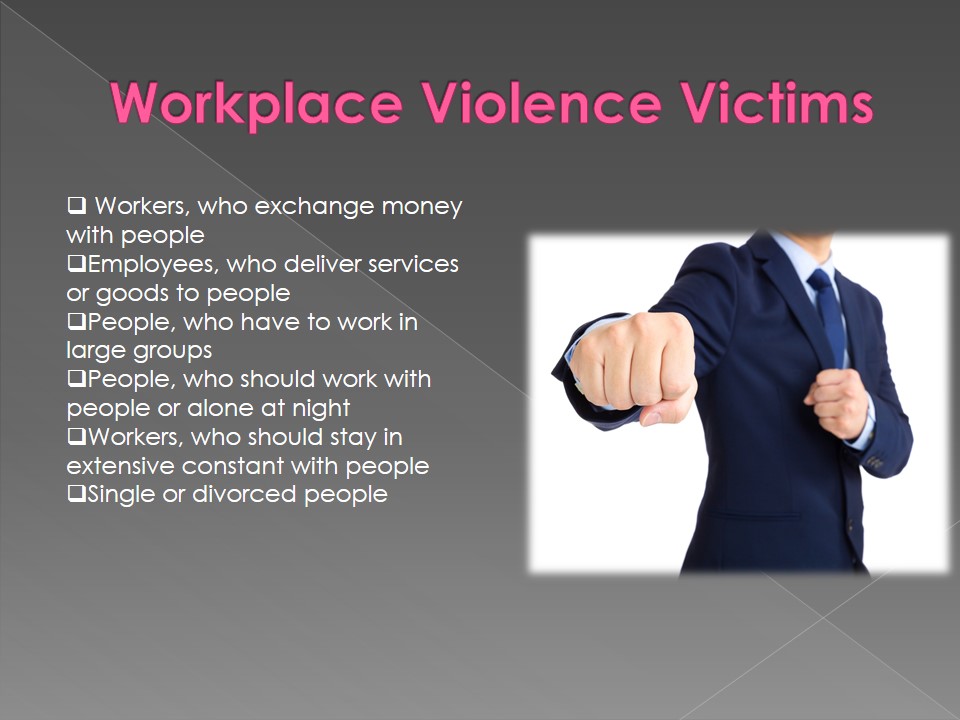
Workplace Violence: Maryland Peculiarities
- The State of Maryland tries to create supportive workplace environment.
- The State of Maryland aims at preventing and eliminating of the cases of violence in the workplace.
- The State of Maryland provides its citizens with a chance to visit special employees’ assistance programs.
In the state of Maryland, much attention is paid to the questions of safety and support in the workplace. Still, many organizations suffer from the cases of violence that cannot be predicted and controlled. Therefore, a number of programs and training are offered to people within their organizations and by local social organizations to help people learn how to protect themselves against violence, not to be afraid to report on such cases, and understand their responsibilities.

Workplace Violence: Maryland Healthcare
- Healthcare is a driver of Maryland economy.
- More than 250,000 people work in the industry.
- More than 200 cases of workplace violence in hospitals are reported annually:
- A patient tried to kill a nurse;
- A patient killed his wife and turned the gun towards his own head;
- A patient’s relative killed the doctor because of his mother’s worsened condition, etc.
Almost every area in Maryland is under a threat of workplace violence. People are ready to demonstrate their dissatisfaction or frustration by means of violence behavior that threatens human lives. The examples offered and the numbers mentioned help to realize that Maryland healthcare system is neither perfect nor safe. Every person could be a victim of workplace violence.
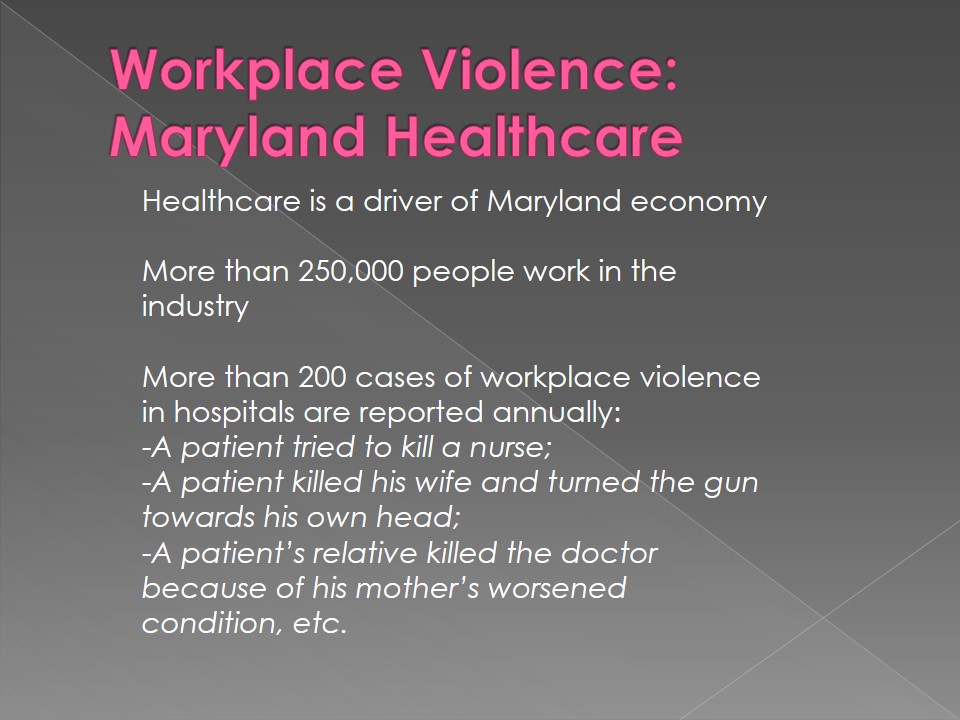
Workplace Violence: How Can Help?
- Community.
- Social services.
- Governments.
- Leaders and managers.
- Security services.
- Personal attention of employees.
People should know whom they can address to in order to protect themselves against workplace violence and learn what should be done in case some situations are experienced. For example, it is possible to involve the community in the discussions (Kerr, 2012). Social services and security services could explain what kind of help could be offered and when effective protection is required. Governments should take responsibility for the legalization of effective protection against workplace violence and introduce the laws that could help citizens. Leaders and managers are also important figures in workplace violence discussions because they control situations, take preventive steps, and protect their employees by any possible means. Finally, people could provide help to themselves. In case they pay attention to the environment and people around, they can notice that something goes wrong. At the same time, people should not be too suspicious in order not to forget their main duties and priorities.
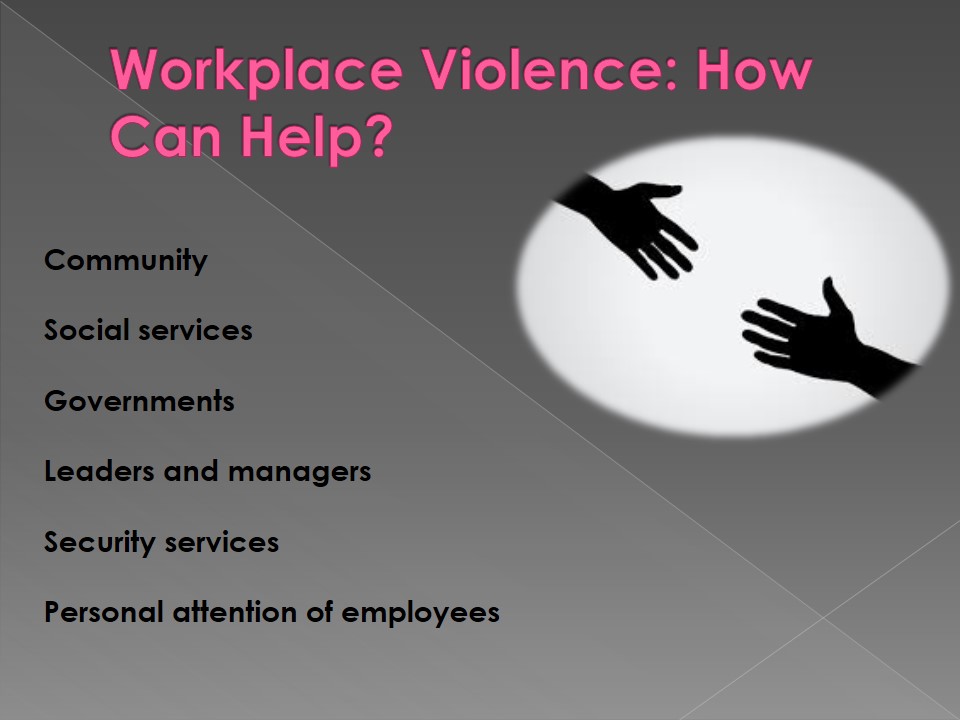
Progress of the Criminal Justice System
- Court of Appeals.
- Court of Special Appeals.
- District Court.
- Circuit Courts.
- State Police Department.
- Juvenile Services Department.
The existing criminal justice system of Maryland helps to protect the rights of citizens and prevent the cases of workplace violence. The representatives of police departments have to clarify the situations and check the conditions under which people have to work and provide each other with appropriate services (Rosen & Milam-Perez, 2005).

Workplace Violence: Risk Reduction Strategies
- Understanding that violence prevention is a priority in the workplace.
- Involvement of all employees in discussions about violence risks and threats.
- Importance to control personal behavior.
- Abilities to observe other people’s behavior and notify the changes.
- Consideration of all laws, rules, and requirements of an organization.
- Development of safety programs that includes employees, management, training, control, and reporting.
- Promotion of monitoring systems and alarms to identify possible threats.
- Rest rooms could help employees and even patients/customers/clients to relax and re-evaluate the same situations.
- Psychological support that could be offered to all people, who could use the services.
- Attention to and evaluation of resumes and application forms where people share their personal information and current changes in lives.
In Maryland, as well as the majority of American states, much attention is paid to such questions as prevention of workplace violence and identification of the individuals with doubtful or harmful behavior. At the same time, Kerr (2010) underlines that such strategies and suggestions cannot eliminate the cases of workplace violence but helps to avoid the presence of serious incidents like homicide. The steps mentioned on the slide help to understand the essence of workplace violence and comprehend what people could do to prevent the incidents of workplace violence (Rosen & Milam-Perez, 2005).
All these suggestions could help people gain control over violence or, at least, minimize the number of violent incidents in the workplace. It is important to consider different areas of work and consider environmental, psychological, social, cultural, and personal aspects of work in order to clarify what kind of threat could be expected and why (Rosen & Milam-Perez, 2005).

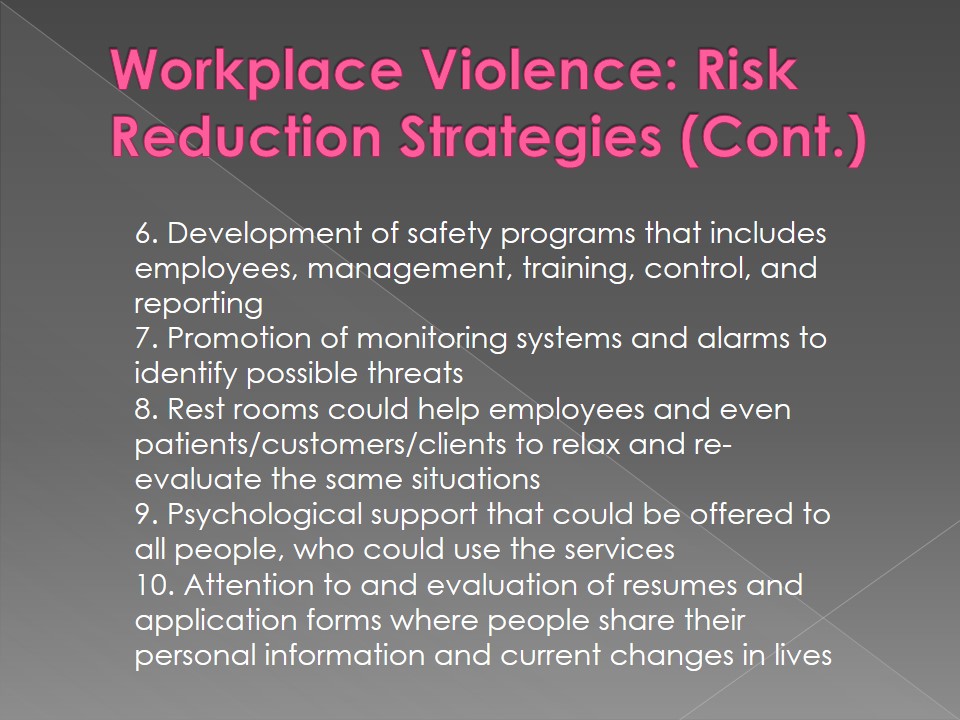
Workplace Violence Prevention: Expectations
- Reduce the number of workplace violence incidents (murders, in particular),
- Help people understand their opportunities,
- Educate employees about safety and support,
- Explain the worth of observation and analysis.
It is wrong to expect a lot from several workplace violence preventive strategies in a short period of time. Still, each strategy has its goal that should be achieved. The identification of the expectations shows that people should have hope to improve their lives and working conditions and demonstrate what they want to achieve in the nearest future. Maryland is the state that has enough opportunities and resources to decrease the number of violent incidents in the workplace. Just more people involvement is required.
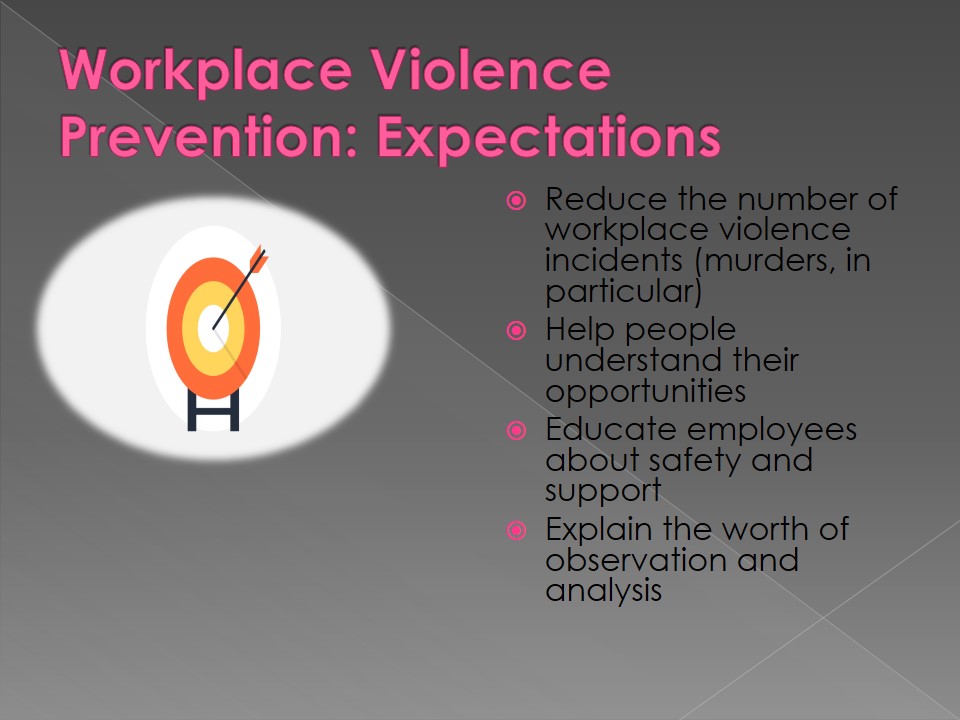
Conclusion
- Workplace violence bothers Maryland people, as well as the citizens of other American states.
- Workplace violence may gain different forms.
- Healthcare is the sphere that undergoes considerable challenges because of workplace violence.
- Every person is under a threat of workplace violence.
- People can do something to change the situation and protect themselves.
The conclusions demonstrate that the evaluation of the information about workplace violence is urgent for people. It is not enough to know statistics and use it as the only evidence. People should learn the theory and analyze the situations from different perspectives to achieve good results and avoid violence in their lives.

References
Kerr, K. (2010). Workplace violence: Planning for prevention and response. Burlington, MA: Butterworth-Heinemann.
Harrell, E. (2011). Workplace violence, 1993-2009. US Department of Justice. Web.
Maryland. (2012). Web.
Rosen, L. & Milam-Perez, L.A. (2005). Workplace violence prevention. Chicago, IL: CHH Incorporated.
Rugala, E.A. & Isaacs, A.R. (n.d.). Workplace violence: Issues in response. Web.
The National Institute for Occupational Safety and Health. (2014). Occupational violence. Web.